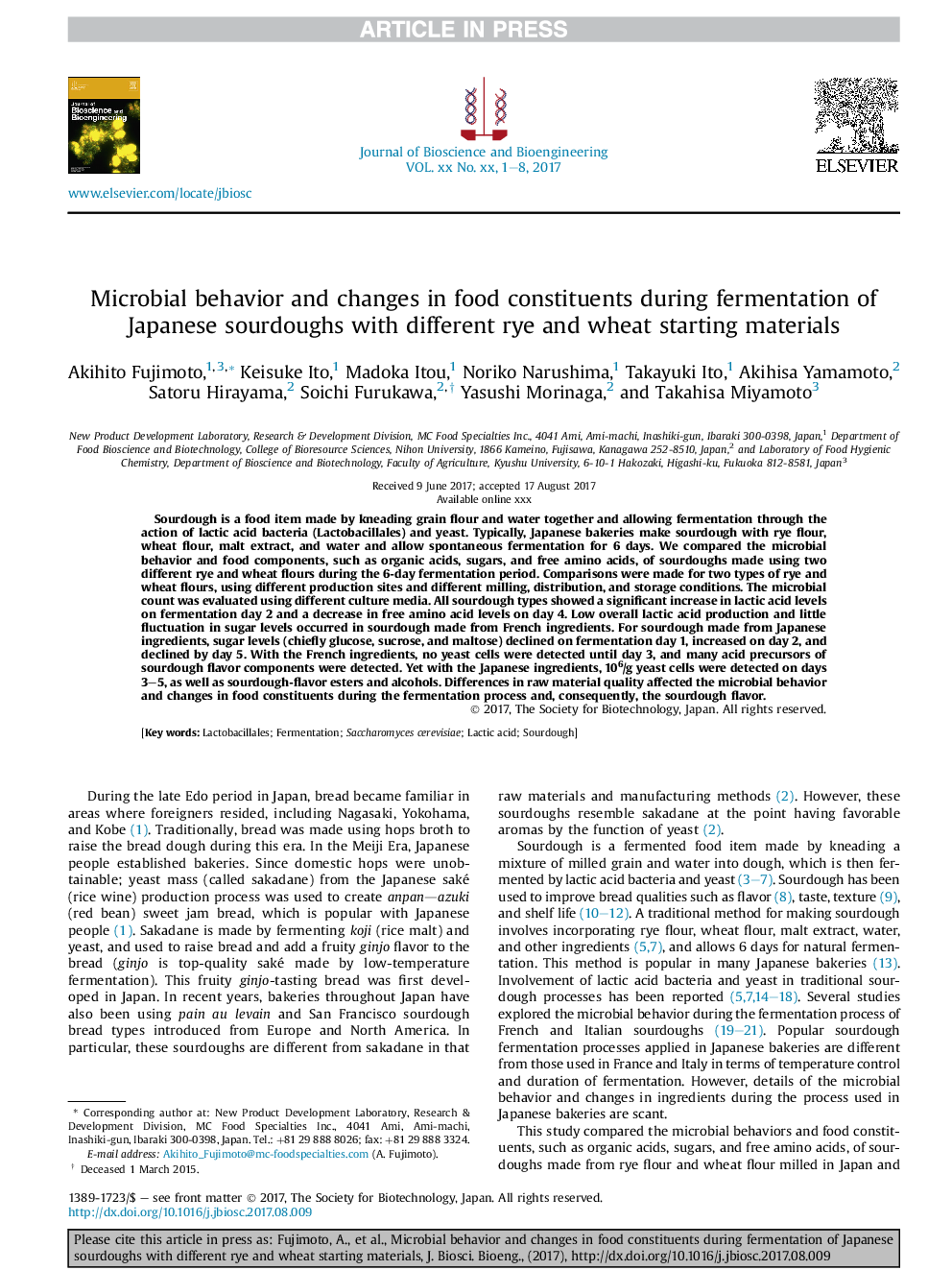| Article ID | Journal | Published Year | Pages | File Type |
|---|---|---|---|---|
| 6490028 | Journal of Bioscience and Bioengineering | 2018 | 8 Pages |
Abstract
Sourdough is a food item made by kneading grain flour and water together and allowing fermentation through the action of lactic acid bacteria (Lactobacillales) and yeast. Typically, Japanese bakeries make sourdough with rye flour, wheat flour, malt extract, and water and allow spontaneous fermentation for 6 days. We compared the microbial behavior and food components, such as organic acids, sugars, and free amino acids, of sourdoughs made using two different rye and wheat flours during the 6-day fermentation period. Comparisons were made for two types of rye and wheat flours, using different production sites and different milling, distribution, and storage conditions. The microbial count was evaluated using different culture media. All sourdough types showed a significant increase in lactic acid levels on fermentation day 2 and a decrease in free amino acid levels on day 4. Low overall lactic acid production and little fluctuation in sugar levels occurred in sourdough made from French ingredients. For sourdough made from Japanese ingredients, sugar levels (chiefly glucose, sucrose, and maltose) declined on fermentation day 1, increased on day 2, and declined by day 5. With the French ingredients, no yeast cells were detected until day 3, and many acid precursors of sourdough flavor components were detected. Yet with the Japanese ingredients, 106/g yeast cells were detected on days 3-5, as well as sourdough-flavor esters and alcohols. Differences in raw material quality affected the microbial behavior and changes in food constituents during the fermentation process and, consequently, the sourdough flavor.
Related Topics
Physical Sciences and Engineering
Chemical Engineering
Bioengineering
Authors
Akihito Fujimoto, Keisuke Ito, Madoka Itou, Noriko Narushima, Takayuki Ito, Akihisa Yamamoto, Satoru Hirayama, Soichi Furukawa, Yasushi Morinaga, Takahisa Miyamoto,
